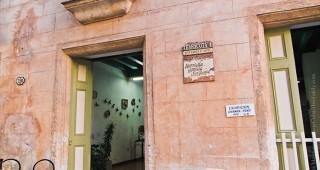This beautiful beach is known for its white sands and turquoise waters. Arguably the best beach in the Havana area, it has its own marina (Marina Tarará), for fishing, diving and snorkeling, among other sea-related activities.

Cárcel de la Habana LH  2
2
Up until 1834 there were no prisons in Havana. Back then, prisoners were crammed together in a small area on the Palacio de Gobierno’s basement. With this in mind, Lieutenant General Miguel Tacón, Gov …

Museo Farmacia Taquechel LH  2
2
This townhouse was adapted in 1898 into a pharmacy by Francisco Taquechel. Restored and reopened in 1996, it functions as pharmacy and museum. Its collection includes 19th-century French porcelain apo …

Casa del Científico (Casa de José Miguel Gómez) LH  2
2
The compact yet extravagant Beaux Arts building on the northwest corner of Prado and Trocadero was once the residence of Cuba’s second president, José Miguel Gómez, known as ‘El Tiburón’ (The Shark). …
 EclecticAdmission: FreePrado #212 esq. a Trocadero, Habana Vieja
EclecticAdmission: FreePrado #212 esq. a Trocadero, Habana Vieja 
Edificio del Seguro Médico LH  2
2
This is one of the most significant exponents of the trends in architecture in Havana of its time. According to architect Pedro Martínez Inclán, “Quintana can boast about having given Havana…two build …
 Modern23 esquina a N
Modern23 esquina a N 
Parque Maceo LH  2
2
Dominating the Malecón to the west, at the foot of Belascoaín (Avenida Padre Varela), is the massive bronze monument to Antonio Maceo, on top of a marble base in a plaza with a fountain. The classical …

Aqvarivm LH  2
2
This modest aquarium has over 90 different species of freshwater fish and aquatic plants, displayed in small tanks. Tropical fish tanks are popular in many Cuban family homes and fish can be purchased …

Memorial a los Estudiantes de Medicina LH  2
2
Inaugurated in 1890, this memorial is a shrine to eight medical students who were executed by firing squad on November 27, 1871, after being falsely accused of desecrating the tomb of Spanish journali …

Solimar Building LH  1
1
An interesting and typical example of the Streamline movement which preferred rounded corners and a sensation of motion can be seen in this building built in 1944. The recovery of simple forms and the …
 Art DecoSoledad esquina a San Lázaro
Art DecoSoledad esquina a San Lázaro 
Estación Central de Ferrocarriles LH  1
1
The building of the railway station, expression of the Spanish plateresque style, was built in 1912 on the site of the former Armory. It has four floors with 77 windows and the main entrance is rounde …
 EclecticAdmission: FreeEgido esq. a Arsenal, Habana Vieja
EclecticAdmission: FreeEgido esq. a Arsenal, Habana Vieja 
Terracota 4 LH  1
1
This is the studio-gallery of ceramicists Amelia Carballo and Ángel Norniella. Their work shows a wide variety of influences and techniques, including the millenary raku, and as the name suggests focu …
